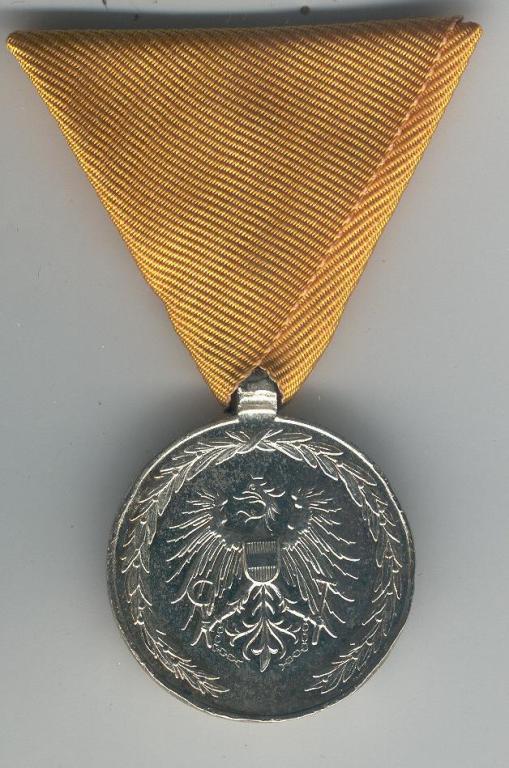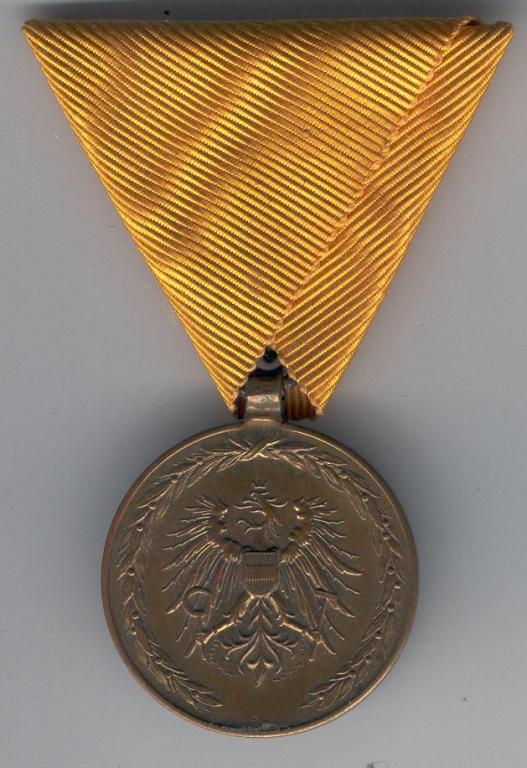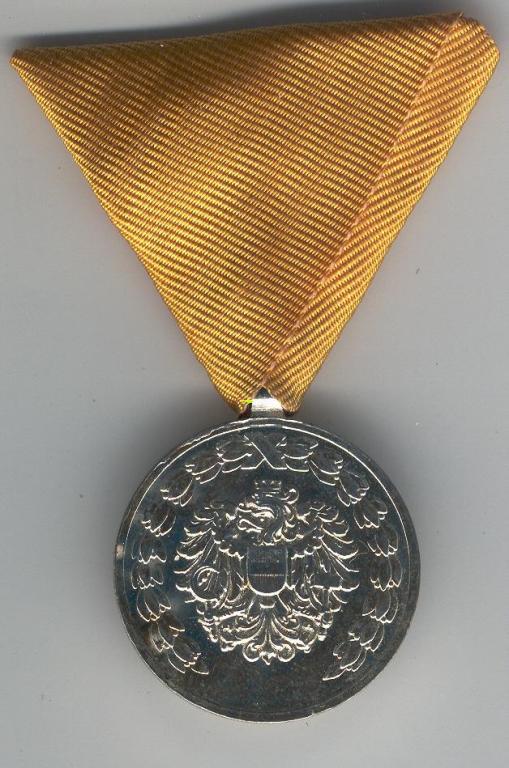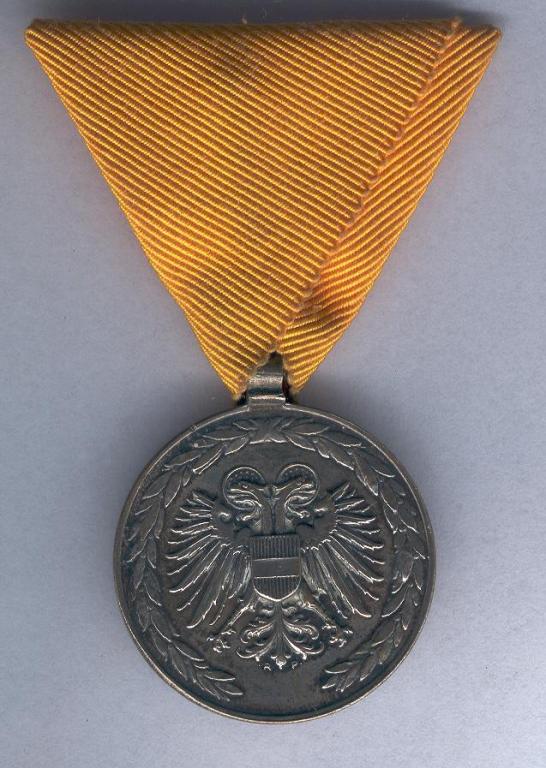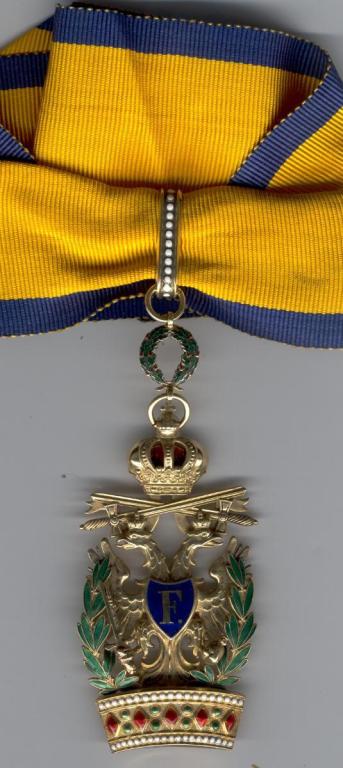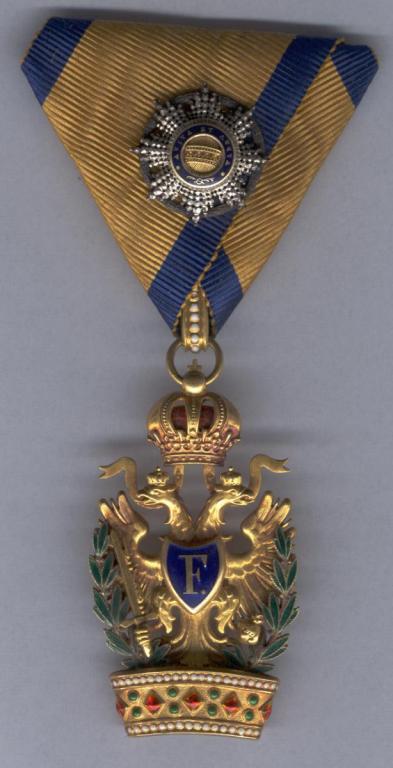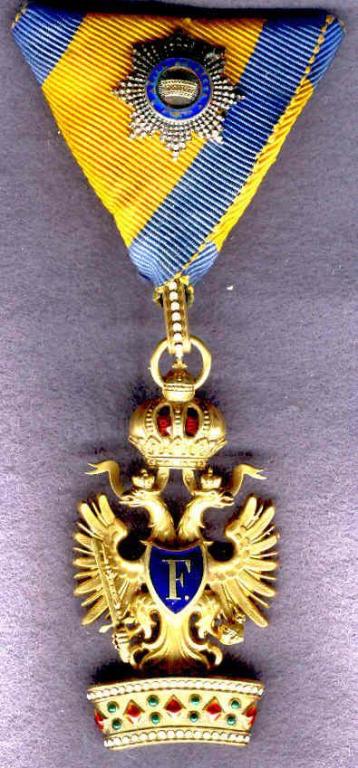-
Posts
241 -
Joined
-
Last visited
-
Days Won
6
Content Type
Profiles
Forums
Blogs
Gallery
Events
Store
Everything posted by Christian1962
-
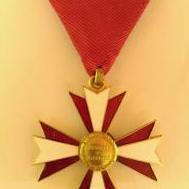
Fire 25 Years Service Medal Questions
Christian1962 replied to 1812 Overture's topic in Austro-Hungarian Empire
I can add some more examples now. Vorarlberg: left frontside (25 years), right backside (40 years). Regards Christian Tirol: 50 years (front and backside) Salzburg: 25 years first model (heraldic shield in old curved shape) 40 years second model (heraldic shield in straight shape) -

Fire 25 Years Service Medal Questions
Christian1962 replied to 1812 Overture's topic in Austro-Hungarian Empire
I will start displaying different examples for issues of the federal states. Burgendland Until 1971 the medal was bestowed with the 1949 - 1951 eagle. Then they changed to the state eagle. left: fontside right: backside The ribbon was changed in 2008 from single yellow to red-yellow (half and half). -

Fire 25 Years Service Medal Questions
Christian1962 replied to 1812 Overture's topic in Austro-Hungarian Empire
In 1949 the medals for 25 and 40 years service were re-established again with a different eagle. In 1951 the Austrian constitutional court abolished this law. From there on the federal states could establish medals with their own heraldic shields. Some did immedately - others later. So there are nine different features of this medal now. Here the 1949 - 1951 issue: -

Fire 25 Years Service Medal Questions
Christian1962 replied to 1812 Overture's topic in Austro-Hungarian Empire
He could not have received it after the war because in 1922 the medal was re-established and showing the heraldic eagle of the Austrian seal of state instead of the Kaiser. You can see two different examples here. The medal with the one-headed eagle was in use from 1922 until 1934 and the double-headed eagle from 1934 until 1938. Both medals are silver for 40-years-service. Regards Christian -

35 Karl Truppen Kreuz and counting. KTK.
Christian1962 replied to Farkas's topic in Austro-Hungarian Empire
HMA should mean "Hauptmünzamt". Regards Christian -

Unknown medal, identification needed
Christian1962 replied to Sampo's topic in Central & Eastern European States
Yes, it´s an award for a DANCON march in Kosovo, which is awarded to everyone who takes part. There are many variants of them since the first were awarded in 1972 in Cyprus. https://www.google.at/search?q=Dancon+march+medals&tbm=isch&source=univ&fir=LANfhagRuetjfM%2CU0gWrgvYVLQbiM%2C_%3B3PNr-SSMI9-xWM%2CVJA6Z-WayblD1M%2C_%3BXQFM4nUHrnzLmM%2CYEOcVdbTSrRhcM%2C_%3BHXRjlCY3lFTNgM%2CI8cd7IV8_TJHZM%2C_%3BAQHbs4rINGplEM%2CRmTc6NanDKZBjM%2C_%3BvCVLYn94xehM1M%2CeghuY0adn-_MGM%2C_%3B3wwv1yW8CkjeLM%2C5DvNLzR8c1VvPM%2C_%3BRG8HNLwmI8ndtM%2C4QmmMiXpTwQs1M%2C_%3BpsPeedNNSGjinM%2CWSwdEELw21jclM%2C_%3BK_KtRH0h1DsurM%2CquOlh75oKbqZtM%2C_&usg=AI4_-kQ5Tn9q3WjTFTmdRwNQtk-blVKg1g&sa=X&ved=2ahUKEwjzqPCPmJ__AhWghf0HHbcWCCcQjJkEegQIGBAC&biw=1920&bih=955&dpr=1 Regards Christian -
Compared with the year 1900 6,10 Kronen were at about 50 € in 2023, compared with 1914 it would be 40 € in 2023. Source: https://www.eurologisch.at/docroot/waehrungsrechner/#/ Regards Christian
-

A little puzzle for the Austrian flight badge aficionados
Christian1962 replied to GdC26's topic in Austro-Hungarian Empire
Oberst Julius Nimmerrichter (1880-1951): He absolved the "Militär-Aeronautikkurs" and received the "Beobachter-Abzeichen" with 02.09.1916 (while being in Russian captivity - which is strange). He also absolved the "Feldpiloten-Ausbildung" and after WW1 on 09.12.1919 he received the "Feldpilotenabzeichen" nachträglich. From 00.11.1918 until 08.10.1920 he did duty as "Truppenkommandant der deutsch-österreichischen Fliegertruppe". Source: Frech Chr., Pichler M., Steiner P., Vlachos I.: "Österreichs Generäle 1919 - 1955", Vol. 3., Vienna 2021, Verlag Militaria: https://militaria.at/Book.aspx?book=7756560&Language=de Regards Christian -

Synthetic ribbons: information wanted
Christian1962 replied to Carlo's topic in Austro-Hungarian Empire
I would think that this kind of ribbon is quite rare. I have not seen any for years "live" or in an auction. Congratulations for owning it. Regards Christian -

Austria-Hungary Austrian Bravery Medals - Tapferkeitmedaille
Christian1962 replied to Tim B's topic in Austro-Hungarian Empire
Happy New Year! Sorry for my late reply but I had to check my literature first. I can confirm that the "Silberne Tapferkeitsmedaille 1. Klasse" was available for Germans. This was an equivalent to Iron Cross 1st class. "Silberne Tapferkeitsmedaille 2. Klasse" was equivalent to Iron Cross 2nd class. Source: Jörg Steiner, Heldenwerk 1914 - 1918, p. 14 Regards Christian -

Austria-Hungary Austrian Bravery Medals - Tapferkeitmedaille
Christian1962 replied to Tim B's topic in Austro-Hungarian Empire
Yes, you are right. The union was called "Bundesvereinigung der Tapferkeitsmedaillenbesitzer". Mostly the decoration was bestowed to members but sometimes for active soldiers too and could be worn on the uniform. The union was closed in 2010 or so. https://www.buchfreund.de/de/d/p/76535363/der-held-organ-bundesvereinigung Regards Christian -

Fire 25 Years Service Medal Questions
Christian1962 replied to 1812 Overture's topic in Austro-Hungarian Empire
Firefighters were and still are volounteers in Austria. There are only few professional organisations in bigger cities like Vienna, Graz, Linz,... which are part of the city government. The medal was re-established in 1922 and again in 1949 for 25 and 40 years volounteer service. A similar medal was created for the Hungarian part of the empire too. Regards Christian -

a iron crown with some question&opinions wanted
Christian1962 replied to wangyaokang2003's topic in Austro-Hungarian Empire
I owned a similar piece with that very detailed elaborated eagle beaks and that kind of a broader body. It was made by Bachruch. Regards Christian -

is this Franz Joseph Order looks great?
Christian1962 replied to wangyaokang2003's topic in Austro-Hungarian Empire
The "Offizierskreuz des Roten Kreuzes" is not very rare. As you can see the case is in bad condition. A very good peace with case will cost 600 €. Ask for a pic of the backside, there are two different kinds of mounting. You can see it here: https://www.dorotheum.com/de/l/6734487/ I am not sure now: the seller want´s 2.400 € for both - Franz Joseph (as shown above) AND Red Cross? This is too much in my opinion. Maybe it´s worth 1.300 - 1.500 for both if the backside of the Red Cross is okay. Regards Christian -

is this Franz Joseph Order looks great?
Christian1962 replied to wangyaokang2003's topic in Austro-Hungarian Empire
Price depends on your local market I would say. Here in Austria it´s not a really rare item. Gold FJO with case go up to 1.500 €. Without case I would not pay more then 1.000 €. Here a link to Dorotheum in Vienna: https://www.dorotheum.com/de/l/7388794/ Kindest regards Christian -

is this Franz Joseph Order looks great?
Christian1962 replied to wangyaokang2003's topic in Austro-Hungarian Empire
It appears to be legit and yes, it´s made from gold. You can recognize that on the hallmarks on the ring and on the hinge of the center backside medaillon. What´s the price? Kindest regards Christian -
You are welcomed any time. Regards Christian
-
Yes, it´s quite rare. It was awarded six (not five) times, here is the list: PVBl. 35/1918 vom 27.02.1918, A. h.E. vom 20.02.1918 – Präs. 5.800 vom 21.02.1918: Vidossich Rudolf, Oberst, ük. im GAR 3, Kdt. einer Infanteriebrigade PVBl. 141/1918 vom 12.08.1918, A. h.E. vom 03.08.1918 – Präs. 27.619 vom 05.08.1918: Hrozny Edler von Bojemil Josef, Fmlt., Kdt. einer Infanteriedivision Puchalski Stanislaus von, Fmlt., Kdt. einer Infanteriedivision PVBl. 151/1918 vom 24.08.1918, A. h.E. vom 15.08.1918 – Präs. 29.438 vom 18.08.1918: Le Beau Aurel, Fmlt., Kdt. einer Infanteriedivision Bardolff Dr. iur. Karl, Fmlt., Kdt. einer Infanteriedivision PVBl. 200/1918 vom 09.11.1918, A. h.E. vom 31.10.1918 – Präs. 40.112 vom 02.11.1918: Soos von Badok Karl, GM Kindest Christian
-
And really rare original case for "Kleine Dekoration" - congratulations! Christian
-
Dear Enzo, your Militärverdienstkreuz is a really desiderable and beautiful piece - congratulations! I purchased some pieces out of the Fattovich collection, esp. breaststars and "Kleine Dekorationen" for rare Leopoldorden decorations. Most of them are in Mericka´s book from 1974. It´s fun for me to own them in spite most of them are Rothe collector´s copies from the sixties. Regards Christian
-
Here just for interest a 2nd class with 2nd award laurel wreath. It´s a purchase from the famous Fattovich collection which was sold some years ago. It´s an early Rothe collectors copy in gold:
-
I can add a "Kleine Dekoration" for the 1st class just with "Kriegsdekoration" but without swords: And one for the peacetime "Kleine Dekoration": Both 3rd classes are gold. Regards Christian


